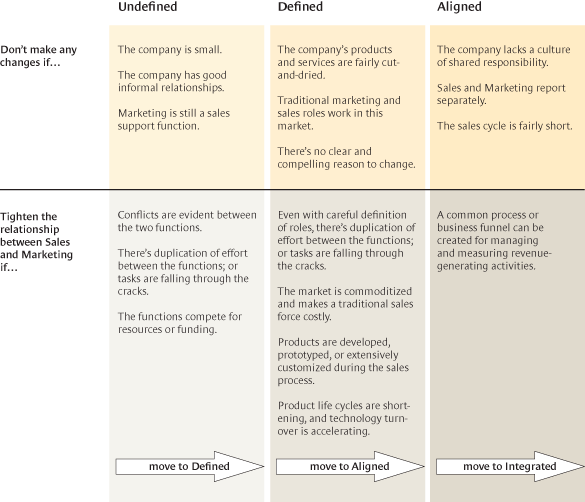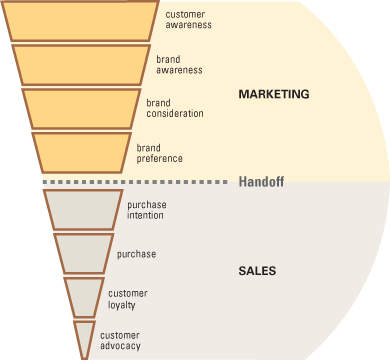Effective collaboration between a company's Sales and Marketing teams is crucial for success in the competitive business world. Despite a strained relationship in the past, when these two departments work together, the benefits include shorter sales cycles, lower market-entry costs, and reduced cost of sales.
Intro
In the competitive business world, a company's success often hinges on the effective collaboration between its Sales and Marketing teams. Historically, these two vital departments have had a strained relationship, with each side undervaluing the other's contributions. However, when they work in harmony, the benefits are substantial, including shorter sales cycles, lower market-entry costs, and reduced cost of sales.
The Root of the Problem
Product designers have long been aware of the benefits of collaborating with manufacturing colleagues, rather than just tossing their latest creations over the wall. One would assume that marketing and sales teams, which also share deep-rooted connections, would have stumbled upon a similar revelation. Yet, these two departments typically operate as distinct entities within organizations, and when they do join forces, it's not always a harmonious alliance. Mediocre sales figures often lead to marketing pointing the finger at the sales force for failing to execute an otherwise stellar market strategy. Conversely, salespeople accuse Marketing of using too much budget, arguing that budgets would be better allocated to expanding the sales team or boosting commission rates. In essence, each group consistently underestimates the other's contributions.
Marketing with many hats
The role of marketing varies greatly from one company to another. Small businesses often equate marketing with selling, while larger companies understand the need for expertise in segmentation, targeting, and brand positioning. As marketing evolves into an autonomous player, it begins to compete with sales for funding, leading to disputes and each function taking on tasks it believes should be handled by the other. Although Marketing gains influence within individual business units, it rarely has significant power at the corporate level. During economic downturns, marketing is under increased scrutiny and is more vulnerable to job cuts than sales.
The Four Relationship Archetypes
Given the potential for clashes, it's unsurprising that some level of dysfunction often develops between Sales and Marketing—even when the heads of these departments are friendly. Harward Business Review looked at different companies and listed four types of relationship archetypes. These relationships evolve as the companies' marketing and sales functions mature—the groups progress from being unaligned (and frequently conflicted) to fully integrated (and generally conflict-free)
Undefined.
In a relationship that is unclear, Sales and Marketing operate independently, each with their own set of tasks and objectives. Both groups are unaware of each other's activities until problems emerge. Meetings between the two are usually reactive, focused on resolving issues rather than working together proactively.
Defined.
In a defined relationship, both groups establish processes and rules to prevent disputes. They adopt a "good fences make good neighbors" mindset, where marketers and salespeople understand their respective roles and stick to their own tasks. The groups begin to develop a common language in potentially contentious areas, such as defining a lead. Meetings become more reflective, with questions like "What do we expect of one another?" arising. The groups collaborate on large events, such as customer conferences and trade shows.
Aligned.
When Sales and Marketing are working together, there are clear boundaries between the two teams, but they are still able to adapt as needed. Both teams collaborate on planning and training. The sales team is familiar with and uses marketing terminology like "value proposition" and "brand image/trust." Marketers seek input from salespeople on important accounts and assist with transactional, or commodity, sales as well.
Integrated.
When Sales and Marketing are completely integrated, the boundaries between the two blur. Both groups redesign their relationship to share structures, systems, and rewards. Marketing, and to a lesser extent Sales, shift their focus to strategic, forward-thinking tasks such as market sensing. Marketers become deeply involved in the management of key accounts. Both groups develop and implement shared metrics. Budgeting becomes more flexible and less contentious, fostering a culture of "rise or fall together.”

The Key to Collaboration
To create lasting change, a series of strategic enhancements should be implemented. These include establishing clear rules of engagement, instilling disciplined communication, and creating joint assignments that encourage collaboration. Appointing liaisons from both teams can help resolve conflicts and share knowledge while colocating the teams promotes regular interaction.
As the relationship strengthens, a chief revenue or customer officer should be appointed to oversee marketing, sales, service, and pricing. Shared databases, processes, metrics, and rewards can be developed, with sales and marketing metrics integrated to drive unified goals. In the end, both departments will be stronger together.
A Unified Approach to the Sales Funnel
In this new era of collaboration, sales and marketing can work together throughout the sales funnel. This collaborative relationship can be mutually beneficial. Marketing can provide expertise in crafting value propositions that resonate with target customers, designing collateral that effectively communicates product benefits, and offering strategic advice to drive sales. By working with marketing and R&D, sales can better understand the customer segments they should be targeting, select the right products to promote, and create effective positioning strategies that resonate with their target audience. By working together, both sales and marketing can ensure that the organisation's products are effectively positioned and that the sales funnel is optimised for maximum conversions.

By combining the unique and complementary skills of sales and marketing, organisations can create a more holistic approach to customer service. The marketing team's ability to identify customer needs and preferences, coupled with the sales team's expertise in closing deals and building relationships, can result in a more personalised and effective customer experience.
In addition, collaboration between these two departments can lead to the development of innovative and strategic marketing campaigns that speak directly to the needs of their target audience. By leveraging each other's strengths, sales and marketing can create a cohesive and united front, working towards the common goal of building a better future for the organisation.
In conclusion, fostering a culture of collaboration between these two vital departments is key to unlocking the full potential of any organisation. By working together, sales and marketing can ensure growth and prosperity in a rapidly changing business landscape.